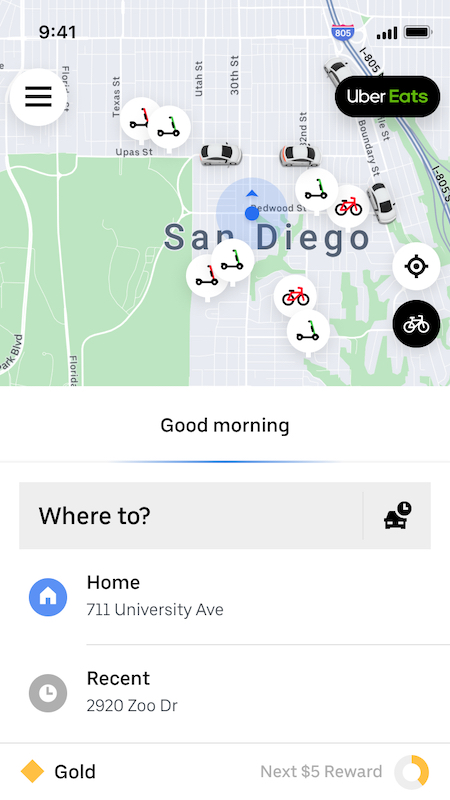Uber is beginning to give its bike and scootersharing services more prominence in its app.
The move is the latest evidence of Uber’s previously stated wish to create an urban mobility platform beyond its core ridesharing business.
It means that from this week, Uber customers in Atlanta, Georgia, and San Diego, California, will be able see information on the availability of rentable bikes and scooters from Jump, which Uber acquired in 2018, and also scooters from Lime, a business in which Uber invested heavily, also in 2018.
Lime has also recently added Uber branding to its scooters in both Atlanta and San Diego, further cementing the partnership.
In a statement to Digital Trends, Uber’s Billy Guernier reconfirmed his company’s desire to put new the mobility offerings front and center in the Uber app.
“Starting in Atlanta and San Diego, riders opening Uber’s app will now see the nearby Jump bikes and scooters, as well as Lime scooters, on the home rides screen, making it easier than ever for them to choose a new mobility option,” Guernier said, adding, “The more transportation modes people have at their fingertips, the easier it becomes to get around without owning a car.”
Uber CEO Dara Khosrowshahi discussed the company’s growing interest in app-based bike and scooter rentals in an interview in August 2018. The boss expressed his desire to build what he described as an “urban mobility platform” where customers can hop between various transportation offerings to get across town, or choose the best single ride according to conditions. In other words, in particularly heavy traffic a scooter might work out to be quicker, while in rainy conditions an Uber car will be a more sensible option.
Uber’s increasing focus on expanding its transportation offerings is already having an effect. Earlier this year, for example, Jump revealed that its bikesharing service in San Francisco is so popular that it’s causing people to take fewer trips in Uber cars, though the overall trip frequency of a Jump ride combined with an Uber car journey is on the rise.
Uber’s strategy to add other modes of transport to its core business mirrors similar efforts made by its main ridesharing rival, Lyft.
But not everyone is happy with the proliferation of bike and scootersharing schemes offered by numerous companies, with folks in some cities fed up with the two-wheelers blocking sidewalks or being driven recklessly through the city.
In June 2018, San Francisco temporarily banned app-based programs using electric scooters while it sorted out a permit system. Following an application that saw submissions from 12 companies, only two — Scoot and Skip — were selected.



